Dream of Riding Waves? Here’s How to Start Surfing After 30
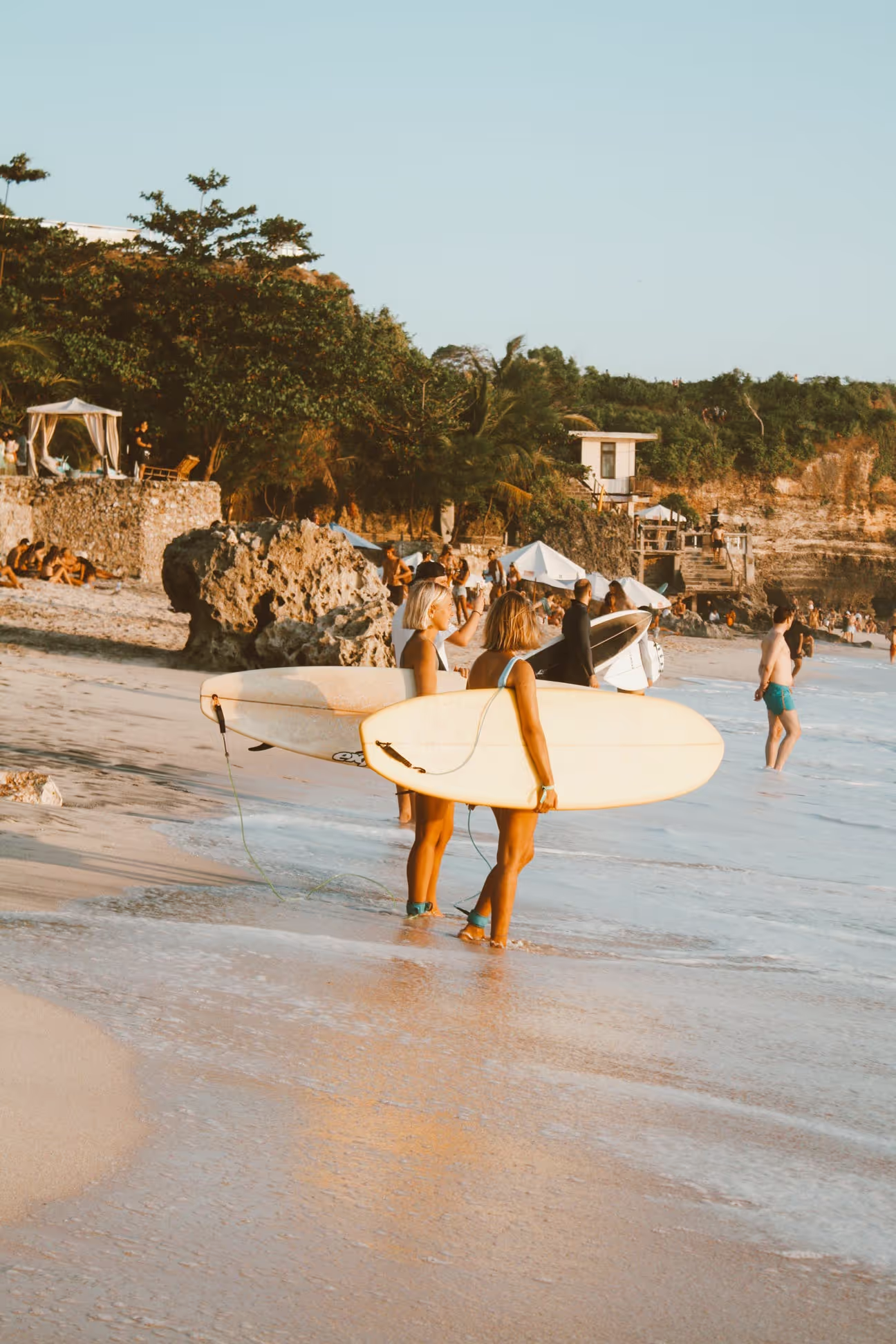
Ever dreamed of catching your first wave but feel like maybe you missed your chance?
You’re not alone.
Literally heaps of people over 30 think surfing is just for young, toned and athletic 20-something-year-olds. But the truth is...
It’s never too late to start wave riding.
In fact (and this might blow your mind), we actually think that learning to surf at 30 or older might be easier in many ways. You’re likely more patient, more intentional and better equipped to handle the learning process. And by the time you finish reading this article, we think you’ll agree!
Born in an age when iPhones, laptops and Netflix didn’t exist? We feel you.
Whether you’re signing up for your first Bali surf holiday or simply curious about the surfing experience, here’s how to master the art of surfing at 30 and beyond.
How long does it take to learn to surf?
This is like asking, “How long is a piece of string?”
The answer is always… it depends.
No two people have the same learn-to-surf journey. And while some may stand up on their first green wave within 30 minutes, others might need multiple sessions before they even paddle out past the shore.
Realistically, mastering the basics takes about 3–6 months of consistent practice. And by consistent, we mean at least three surf sessions per week. Because surfing involves repetition, muscle memory and a willingness to embrace the process.
After 6 months, many people can paddle into waves, read how a wave breaks and ride them to completion. But it’s not unusual to take up to a year before you feel confident surfing independently.
What’s more important is that you don’t compare your journey to other surfers.
Given the stop/start nature of most learn-to-surf timelines, it’s better to focus on your own pace and celebrate your own progress.
Everyone brings a different body, mindset and cardiovascular health to the lineup. And that’s totally okay.
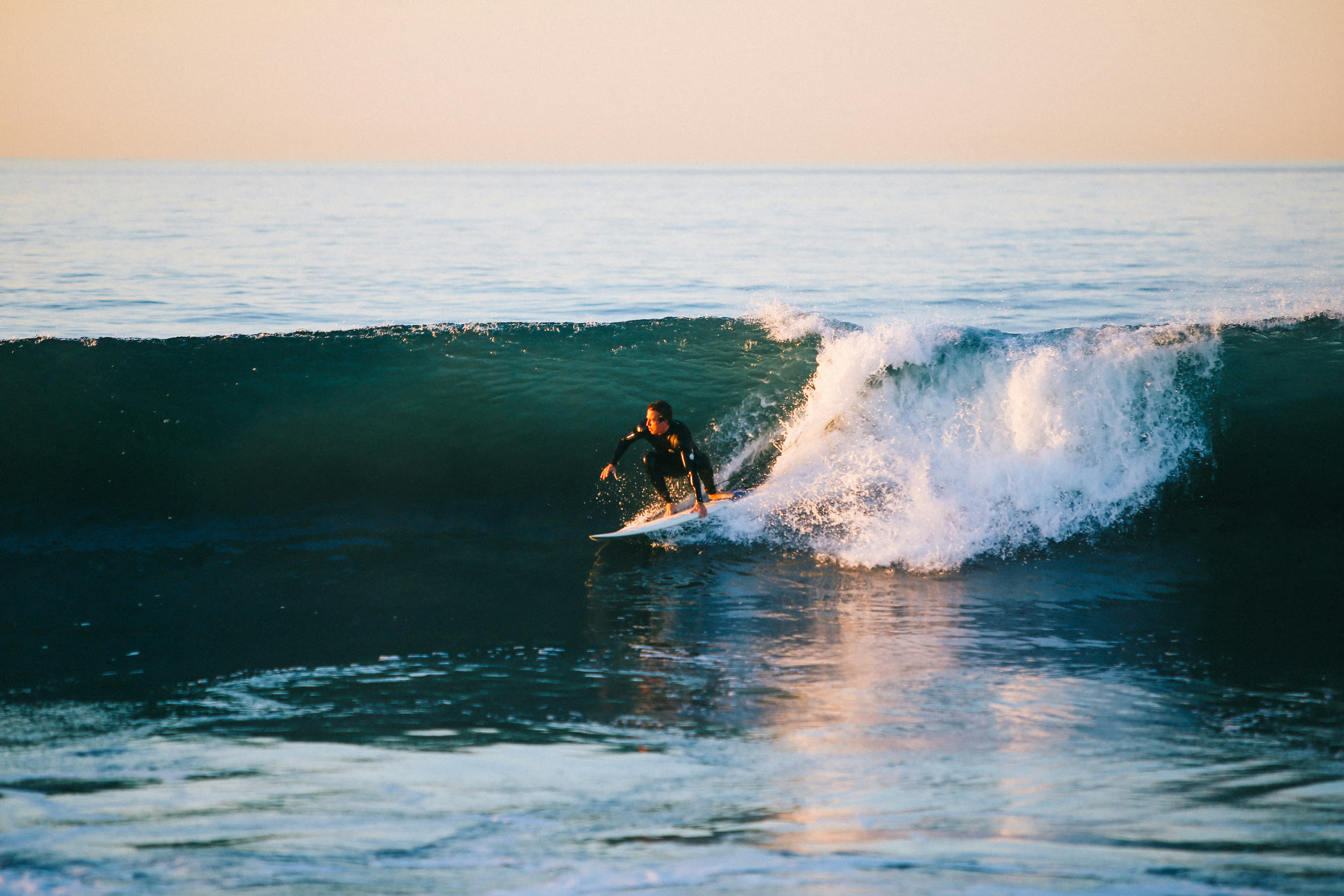
Is it really possible to learn to surf after 30?
Oh, heck yes!
With more user-friendly boards than ever, amazing surf schools that specialise in teaching adults and surf lessons tailored to your ability level, there’s honestly never been a better time to learn.
From mellow beginner spots to warm-water surf trips (hello, Indo), the opportunities for learning are endless!
And with the right attitude and the right surfboard, you’ll be well on your way.
Your 30s are the new 20s, after all. And it’s never too late to pick up a new sport that’s as mentally grounding as it is physically demanding.
Sure, you might not sprint down the beach like you did in your teens, but what you gain in maturity and patience far outweighs any drop in stamina.
You’re doing something for yourself
- Not because of peer pressure or to look cool
- You’re actually taking time out to do something you’ve always wanted to try, regardless of what other people might think
- That kind of self-care is powerful! It boosts confidence and overall wellbeing
- And honestly, surfing is just more fun when you’re doing it for you
- You’re investing in your own joy... and that’s always worth it
You’re able to appreciate the mental benefits too
- Sure, surfing is great for physical strength and cardiovascular health, but the mental perks are just as impressive
- Being older (and wiser) means you recognise how surfing helps reduce stress, clear your mind and build resilience
- Instead of chasing thrills, you’re likely more in tune with how the ocean calms you
- Surfing becomes a kind of moving meditation... a way to unplug and reconnect
- This emotional clarity is often missed when you’re younger and just chasing adrenaline highs
You’ll progress with intention
- You’re more likely to approach surfing with goals, discipline and perspective
- The learning process becomes a journey, not just a means to an end
- Each small win (like catching your first green wave or reading a new break) feels huge!
- You value the time it takes to improve and you give yourself the grace to keep going
- These lessons ripple into other parts of your life: work, relationships, focus, self
Ready to Surf in Bali? Secure Your Spot Now!
7 practical tips for learning to surf at 30 and beyond
Step 1: Book a lesson with a certified instructor
Trying to teach yourself to surf can be frustrating and even dangerous.
A certified instructor sets you up with proper technique and safety from day one. They'll help you understand the right equipment for your ability level and teach you how to read the ocean with sense and skill.
- Start with a private or small-batch group lesson for more individual attention
- Ask if they provide beginner-friendly boards and wetsuits
- Make sure the school or surf camp is accredited and the instructors are qualified
- Use the lesson to ask questions about gear, beginner spots and even surf slang
- Don’t expect to “master it"... focus on small wins like standing up or paddling effectively
Choose the right beginner board
Your board is your most important tool. And the right one makes it much easier to balance, catch waves and enjoy the process.
If you're starting to strike out on your own, remember that a big board with good volume (40-60 litres) is essential.
It'll help you stay afloat and give you more time in the whitewater or line up to build confidence.
- Start with a foam longboard: 8 to 9 feet is ideal for most adults
- Look for boards with lots of volume (litres) for better floatation
- Avoid performance shortboards (the short, narrow, pointy-nosed boards) until you're pulling off consistent pop-ups and surfing confidently by yourself
- Book a multi-day surf guiding trip and experiment with different surfboards
Pick a beginner-friendly surf spot
Not all surf breaks are created equal. And the wrong one can be intimidating or even risky.
If you're starting to surf on your own, always choose a beach with mellow waves and a friendly lineup that suits your skill level. These beginner spots are usually safer and make the learning curve much more fun.
- Look for breaks relatively close to shore with soft, rolling waves
- Avoid heavy, barrelling breaks until you’re more experienced
- Reef breaks are OK so long as the waves are small and the tide is high
- Check local surf reports for wave size (aim for 1 to 2 feet or 0.5 metres to start)
- Weekdays are often less crowded than weekends
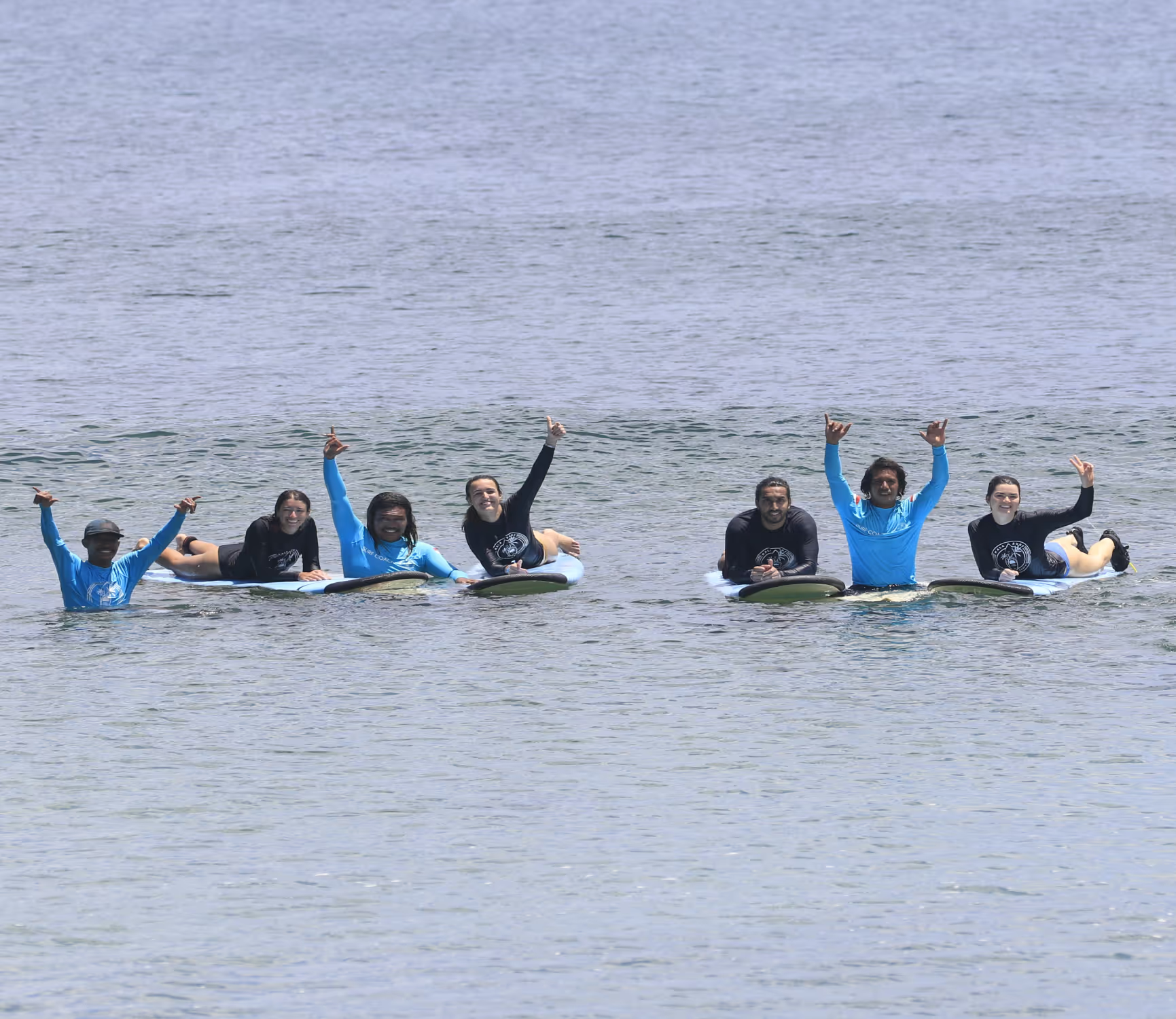
Work on your fitness (before and alongside surfing)
Surfing is a demanding sport. It calls on your entire body to pop, wiggle and move in ways that might otherwise feel... unnatural.
Improving your physical strength, mobility and endurance will help you progress faster. If you’ve been away from regular physical activity in the past, easing into fitness now will make a monumental difference.
- Build paddling power with swimming or resistance exercises
- Improve balance with yoga, pilates or balance boards
- Stretch regularly to keep your hips, shoulders and spine mobile
- Strengthen your core! It’s critical for both paddling and pop-ups
- Remember: include rest days to avoid burnout and muscle fatigue
Learn surf etiquette
Did you know that the ocean has rules? Otherwise called surf etiquette, these unwritten rules help us stay safe in the line up.
Many surfers, even those with years of experience, occasionally forget the surf etiquette basics. Don’t be one of them. Learn more about surf etiquette and stick to the code!
- Never drop in on someone else’s wave (the surfer closest to the peak has priority)
- Don’t paddle straight through the middle of the lineup (go around the break)
- Apologise if you make a mistake. People respect honesty and accountability!
- Wait your turn... especially at busy breaks
- Watch others and observe the rhythm before jumping into a new lineup
Practice regularly and be patient
As much as we all want to shred overnight, surfing isn’t something you master in a few sessions.
Progress takes time. It comes in layers. And it's often built on muscle memory and persistence. Just keep in mind that every wave you catch (no matter how small) moves you forward.
- Aim to surf between 1-3 times per week to build muscle memory
- Track your progress by journaling sessions or filming yourself
- Celebrate small wins like better paddling or popping up faster
- Don’t compare yourself to gnarly shred kids or seasoned surfers... everyone learns differently
- Use bad sessions as lessons, not reasons to quit
Join a surf community or camp
Surfing with others makes everything more fun!
It also helps you stay committed. Whether you’re working on pop-ups or performing cutbacks down the line, learning with others who match your skill level makes the experience more accessible and more rewarding.
- Find a local surf crew or group for adult beginners
- Attend surf camps tailored for your age and ability level
- Connect with surf buddies who encourage and support you
- Use online forums or social media to swap tips and meet others
- Learning together makes it easier to laugh off wipeouts and celebrate wins
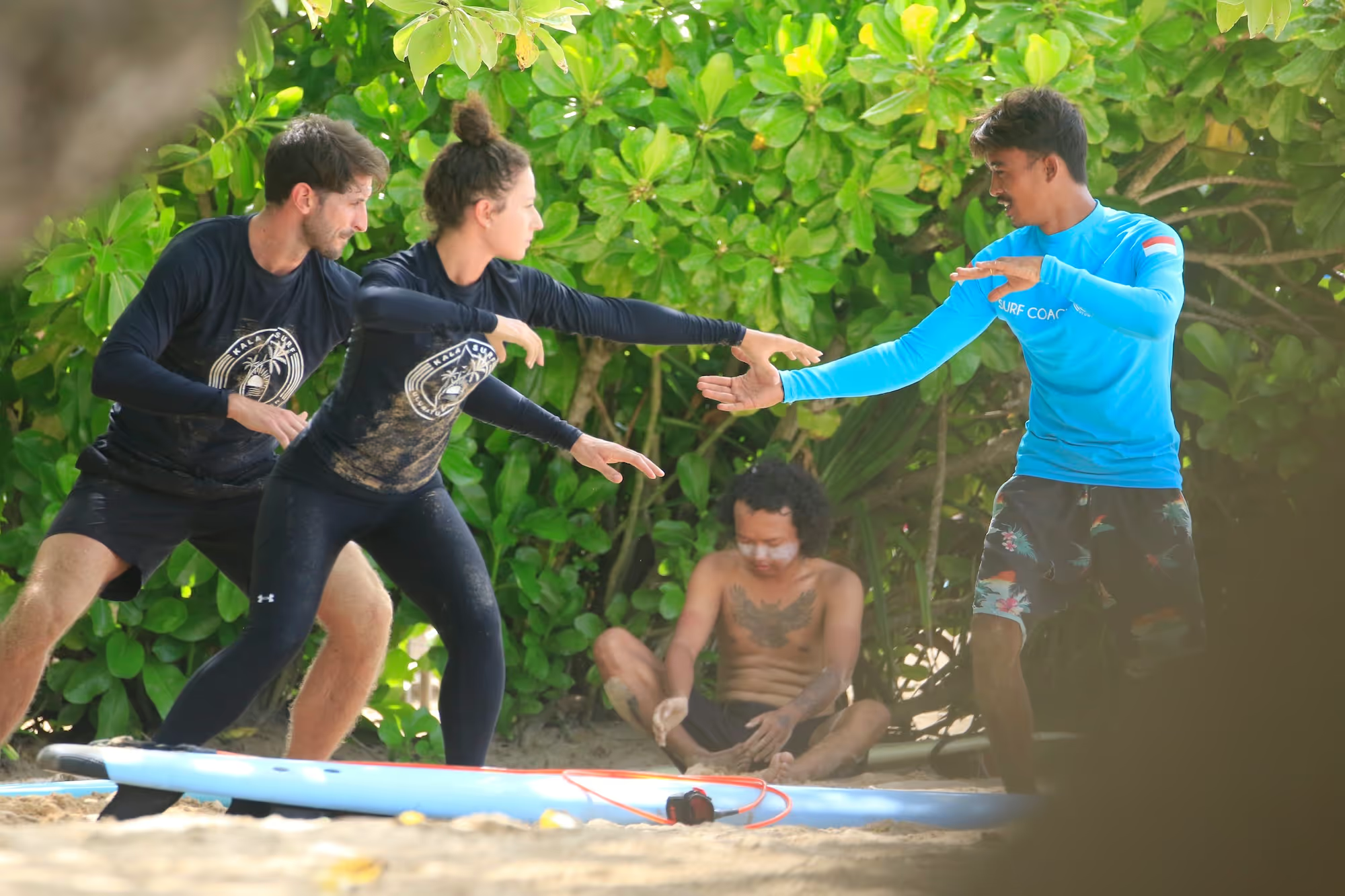
Final thoughts
Starting to surf after 30 isn’t just possible... it can be life changing!
While you may not be paddling long distances on day one or carving waves like seasoned surfers, you’ll be gaining something just as powerful: confidence, joy and a deeper connection to this big, beautiful ocean.
With the right equipment, patience and community, surfing becomes a pastime that delivers more fun than frustration (even if your first waves are in the whitewater close to shore).
We tell this to all our guests at Kala Surf: it doesn’t matter where you’re starting from. What matters is your willingness to move forward and make the occasional mistake!
Now, more than ever, there are beginner-friendly surf schools, expert-led surf lessons and mellow wave conditions specifically designed for beginner surfers.
Don't spend your life waiting for the right moment. Learn to surf as a 30+ year-old today!
More blogs you might like
FAQs
Find answers to your last-minute questions about your upcoming surf adventure with us.
Our packages include accommodation, daily surf lessons, and access to all camp facilities. We also provide surf gear for your convenience. Additional activities can be booked separately.
Travel insurance is highly recommended to cover any unexpected events. It can protect you against cancellations, medical emergencies, and lost belongings. Please check with your provider for specific coverage.
Booking is simple! Visit our Packages & Prices page to select your desired package. You can complete your reservation online or contact us for assistance.
Kala Surf Camp is located in the heart of Bali, close to the best surf spots. Our camp offers a peaceful environment while being just a short distance from vibrant local culture. You'll enjoy easy access to both surf and relaxation.
Yes, date changes can be made depending on availability. Please contact our support team as soon as possible to discuss your options. We aim to accommodate your needs whenever we can.





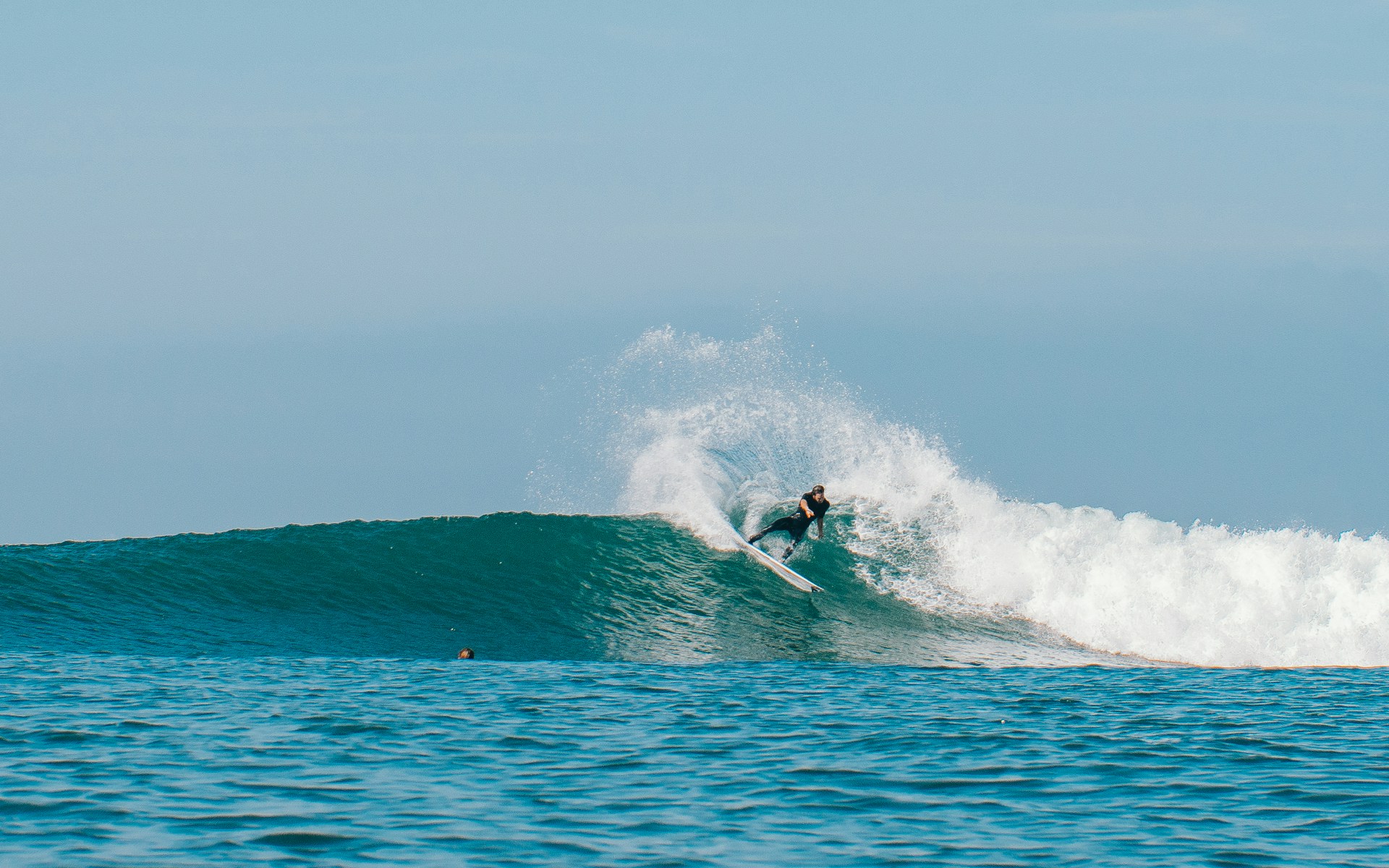
.jpg)